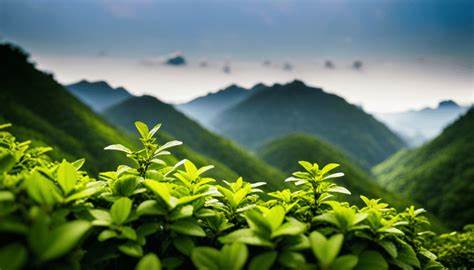Tea production drops 3.7% to 137.85 million kg in June

Tea production drops 3.7% to 137.85 million kg in June
Tea production in June 2023 has experienced a decline, reaching 137.85 million kilograms. This represents a decrease of approximately 3.7 percent compared to the tea production in the same month of the previous year, June 2022, which was recorded at 143.12 million kilograms. The information about the drop in tea production is based on provisional data provided by the Tea Board.
There could be several factors contributing to this decrease in tea production:
1. Weather Conditions: Weather plays a crucial role in tea cultivation, and adverse weather conditions such as drought, excessive rainfall, or unseasonal temperature fluctuations can negatively impact tea bushes’ growth and productivity.
2. Pest and Disease Attacks: Pests and diseases can significantly affect tea plantations, leading to reduced yields and quality. If not adequately controlled, outbreaks of pests and diseases can spread rapidly through tea gardens.
3.Natural Calamities: Natural disasters like floods, landslides, or storms can cause severe damage to tea estates, disrupting normal farming operations and causing a drop in production.
4. Labor Issues: Labor shortages or strikes can disrupt regular plucking and processing activities, affecting the timely harvesting and production of tea.
5. Aging Tea Bushes: As tea bushes age, their productivity tends to decline. Without proper rejuvenation or replanting efforts, the overall tea production may be impacted.

6. Market Demand and Prices: Market conditions, including demand and prices, can influence tea production decisions. If tea prices are low or demand is sluggish, farmers may choose to reduce production to avoid oversupply.
7.Shift in Cultivation: Sometimes, farmers may decide to shift to other crops due to changing market dynamics or profitability, leading to a decrease in tea cultivation area.
It is essential to note that provisional data may be subject to revision as more accurate and comprehensive data is collected and analyzed. Governments, agricultural departments, and tea associations often monitor tea production closely to understand the trends and address challenges faced by the industry.
Strategies to mitigate the impact of adverse factors on tea production may include technological advancements, pest control measures, improving irrigation and drainage systems, and promoting sustainable agricultural practices to enhance overall productivity and quality of tea.
In June 2023, North India emerged as the leading tea-producing region, contributing 109.70 million kilograms of tea to the total production. North India’s tea plantations are primarily concentrated in states such as Assam, West Bengal, Himachal Pradesh, Uttarakhand, and parts of Sikkim and Arunachal Pradesh. Among these, Assam and West Bengal are the most prominent tea-producing states in the region.
However, Assam, which is known for its robust and flavorful tea, experienced a decline in production during June 2023. It produced 63.51 million kilograms of tea during the month, which was notably lower than its production in the same month of the previous year, June 2022. In June 2022, Assam’s tea production had reached 75.16 million kilograms.
The decrease in tea production in Assam during June 2023 could be attributed to several factors, including:
1. **Weather Challenges:** Assam’s tea estates are susceptible to weather-related issues like excessive rainfall or drought, which can negatively impact tea bushes and lead to reduced yields.
2. **Pest and Disease Incidence:** Pest attacks and diseases can cause significant damage to tea crops, affecting their health and productivity. If not adequately controlled, these factors can lead to a decrease in tea production.
3. **Labor Shortages:** The availability of skilled labor is essential for plucking tea leaves at the right time. Labor shortages or disruptions can lead to delays in harvesting, affecting the overall production volume.
4. **Market Factors:** Tea producers may adjust their production levels based on market demand and prices. If market conditions are unfavorable, farmers might reduce production to avoid oversupply.
5. **Natural Calamities:** Natural disasters, such as floods or landslides, can cause damage to tea estates and disrupt regular farming operations.
Despite the drop in tea production in Assam, North India’s overall tea production remained significant due to contributions from other tea-producing regions like West Bengal and parts of the Himalayan states.
West Bengal, another major tea-producing state in North India, witnessed a slight increase in tea production in June 2023 compared to the same month in the previous year. It produced 42.64 million kilograms of tea in June 2023, up from 40.42 million kilograms in June 2022.
Tea is an essential agricultural commodity in India, and fluctuations in production volumes can have economic implications for the industry and the country’s export revenues. The tea sector in India continues to evolve, facing challenges and adapting to changing conditions to ensure the sustainability and growth of one of the nation’s significant agricultural exports.
On the other hand, West Bengal, another significant tea-producing state in India, produced 42.64 million kilograms of tea in June 2023. This is slightly higher than its production in June 2022, which stood at 40.42 million kilograms.
According to sources from the Indian Tea Association (ITA), the drop in tea production volumes can be attributed to unfavorable weather conditions and pest attacks in the tea gardens. These factors likely affected the tea plants’ growth and resulted in a decrease in overall tea production during the specified period.






